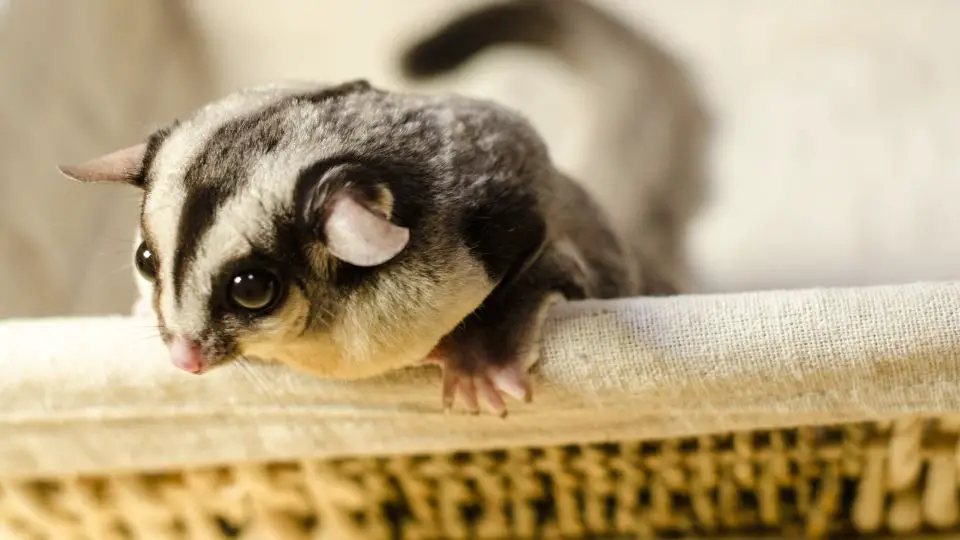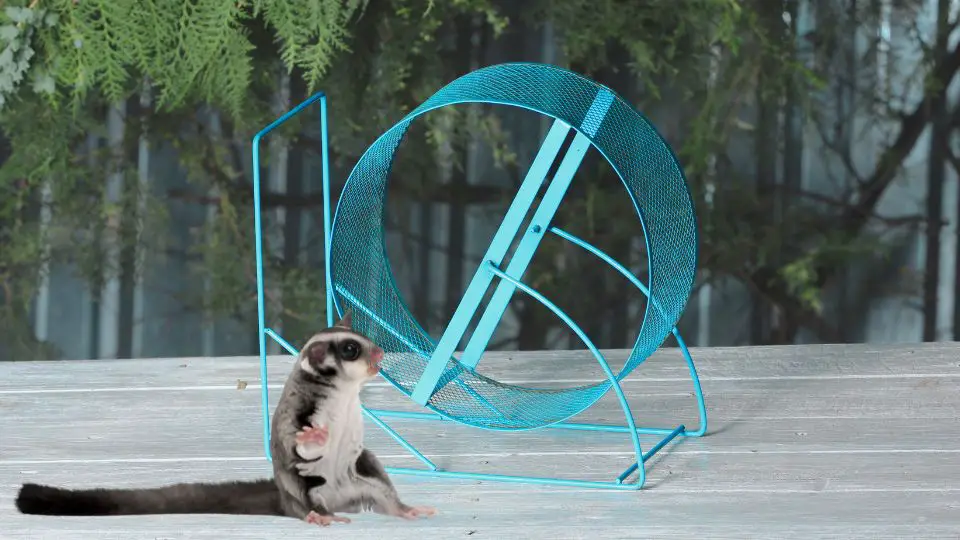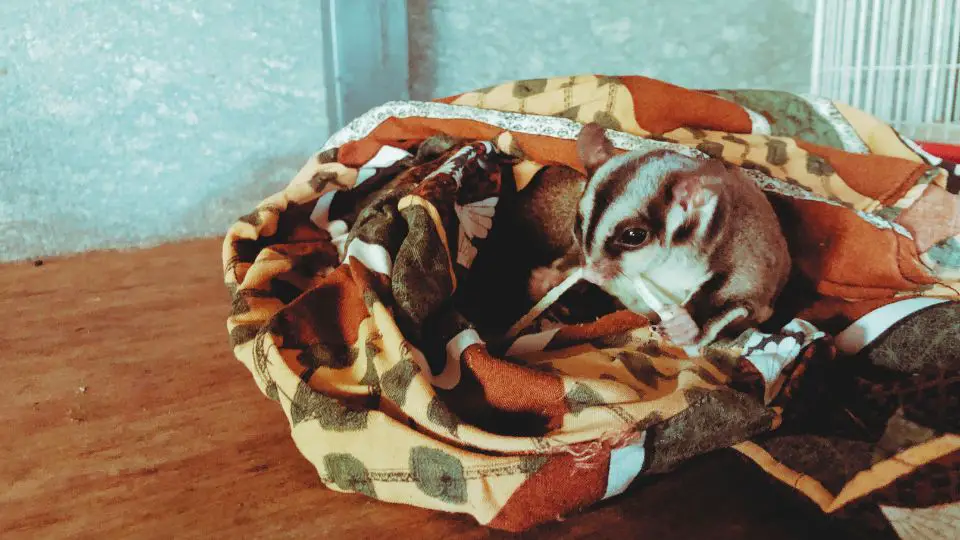Sugar gliders are exotic animals that are native in warmer countries, such as Australia and Indonesia. They are very sensitive to changes in temperature and can get cold very easily.
If sugar gliders get too cold, they will start to shiver and their body temperature will drop. They will enter into a state of torpor, which is a type of hibernation. In this state, their metabolism will slow down and they will become very lethargic. If the sugar glider is not warmed up soon, they can enter into a coma and die.
In this article, we will talk about what are the signs of sugar glider entering torpor, how to tell if they are too cold and what to do if such events happen.
What happens if a sugar glider gets too cold
If sugar gliders get too cold they can get hypothermia. When their body temperature gets too low, it can cause serious health problems and even death. Sugar gliders are native to Australia and Indonesia where the temperatures are warm year-round. But in other parts of the world, sugar gliders can be at risk for getting too cold.
The ideal temperature for sugar gliders is between 80 – 88 degrees Fahrenheit (26 – 31 degrees Celsius) and in some cases it can go below to 60 degrees Fahrenheit (15 degrees Celsius). But if the temperature dips below this, they can start to experience health problems. Some of the symptoms of hypothermia in sugar gliders include weakness, lethargy, and shivering.
When too cold, sugar gliders enter a state of torpor. Torpor is when the body temperature and metabolism drops in order to conserve energy. The problem with this is that if the sugar glider doesn’t warm up soon enough, the metabolism can drop too low and the sugar glider can die. Sugar gliders can stay in torpor for up to 30 hours, but no longer than this.
Signs of sugar glider entering torpor include:
Sugar glider becomes lethargic
This means that the sugar glider will move slower, be less active, and sleep more. They also will have a lose in appetite that can add several health problems to the little pet.
If this happens, try to give your glider his favorite treats to make sure he is getting enough to eat. Sugar gliders can go 3 days and a half without any food and only water, but you should make sure that such an extreme case should not be reached.
Sugar glider’s fur looks fluffed up
This is the sugar glider’s way of trying to trap heat and keep warm. If you notice this, it’s a good idea to try to warm up your sugar glider gradually.
One way to do this is to put him in a pouch or nest box lined with a soft, warm material like a fleece blanket. You can also put a heating pad on low underneath half of the pouch or nest box. Make sure the sugar glider can move away from the heat if he starts to feel too warm.
Cold to the touch
If your sugar glider feels cold to the touch, this is a sign that he is too cold and needs to warm up gradually as described above.
If you think your sugar glider is too cold, it’s important to seek veterinary care immediately, as hypothermia can be fatal.
Sugar gliders are very sensitive to temperature changes and can easily get too cold, so it’s important to be aware of the signs of hypothermia and take steps to keep your sugar glider warm.
Unresponsive or unconscious
If your sugar glider is unresponsive or unconscious, this is a medical emergency and you should seek veterinary care immediately.
What to do if my sugar glider gets into torpor?
If you think your sugar glider is in torpor, it’s important to seek veterinary care immediately as it can be fatal if not treated.
What can you do, is to always have a “torpor kit” prepared. Such kit means always having:
- Gliderade: This is a sugar glider rehydration drink that can help raise the blood sugar levels and give your sugar glider some energy. Mix 1 teaspoon powder to 5 teaspoons warm water;
- Honey: If you don’t have Gliderade, honey can do the job;
- Heating pad: This can help warm up your sugar glider gradually;
- Oatmeal: This can help raise the blood sugar levels;
- Small syringes or pipettes: This can help you give the sugar glider honey or Gliderade if they refuse to eat. Just drop some liquid on their lips, and with some luck they will start to lick the pipette;
- Fleece Square: This can be used to line the bottom of the pouch or nest box so the glider can snuggle into something warm.
When getting into torpor, be sure that the sugar glider is hydrated as if they may survive 3 days without food, they can’t go more then 12 hours without water. Dehydration will kill a sugar glider much faster then starvation.
If you are not sure how much time passed since your glider entered into torpor (maybe it happened over night, while you where sleeping), assume the worst and seek medical attention for your beloved pet.
How do I know if my sugar glider is too cold?
There are some clear signs that your sugar glider is getting too cold. This signs include:
Shivering
If you see your sugar glider shivering, this is a sign that he is trying to generate heat to warm up. This is a normal response to cold weather, but if the shivering persists, it’s a sign that the sugar glider is too cold and needs to warm up gradually.
Sugar gliders are very sensitive to temperature changes and can easily get too cold, so it’s important to be aware of the signs of hypothermia and take steps to keep your sugar glider warm.
Lethargy
Lethargy it’s the most common sign of a sugar glider getting too cold. If your sugar glider is normally active and playful, and suddenly becomes lethargic and uninterested in playing, this is a sign that he is too cold and needs to warm up.
Another common sign of a sugar glider getting too cold is if he stops eating and drinking. Sugar gliders need to eat and drink regularly, so if your sugar glider stops doing this, it’s a sign that something is wrong.
Weakness
If your sugar glider seems weak or unsteady on his feet, this is a sign that he is too cold and needs to warm up.
How can I keep my sugar glider warm in winter?
There are some things you can do to make sure your sugar glider stays warm in winter.
Air conditioning
In the winter, you can place the cage of your pet in a room that has an air conditioner. This way, you can set the air conditioner to a temperature that’s comfortable for you and your sugar glider.
Cover The Cage With Blankets
You can also cover the cage of your pet with blankets to help keep him warm. Just make sure that the blankets are not too heavy or bulky, as your sugar glider could get tangled up in them.
Use a space heater or a heat lamp
You can also use a space heater or a heat lamp to help keep your sugar glider warm in winter. Just be sure to place the heater or lamp in a safe place where your sugar glider can’t reach it and get burned.
Our recommendation is to never use heat rocks, as they can get too hot and burn your sugar glider.
Place fleece at bottom of the cage
You can also place a piece of fleece at the bottom of the cage to help keep your sugar glider’s feet warm. Just make sure to clean the fleece regularly so it doesn’t get too dirty.
Get your glider a companion
Sugar gliders are social animals, so getting your sugar glider a companion is a great way to help keep him warm in winter. Sugar gliders like to snuggle up together to stay warm, so having a buddy will help keep your sugar glider warm in winter.
Just make sure to get your sugar glider a companion that is the same size and age, as sugar gliders can be aggressive towards other animals if they are not the same size.
Conclusion
If you think your sugar glider may be too cold, it’s important to take action immediately and warm him up gradually. There are some things you can do to help keep your sugar glider warm in winter, such as using an air conditioner, covering the cage with blankets, or using a space heater or heat lamp. You can also place a piece of fleece at the bottom of the cage to help keep your sugar glider’s feet warm.
Finally, getting your sugar glider a companion is a great way to help keep him warm in winter. Sugar gliders are social animals and like to snuggle up together to stay warm, so having a buddy will help keep your sugar glider warm in winter.







